Most British tanks built in the first half of the Second World War quickly became obsolete. Their war ended by mid-1943, after that they only served as a chassis for SPGs or ARVs. The only British tank of the period which continued to be built until the final stages of the war was the Churchill. At first, it was a disappointment, and it might have been replaced by the A33 Excelsior or the Assault Tank T14 if not for its rehabilitation in Tunisia. This allowed the development of the vehicle to continue. The result was the Churchill VII, a tank that first went into battle 76 years ago on June 6th, 1944.
Bulking up
The Churchill's reputation was salvaged thanks to its thick frontal armour, powerful 6-pounder gun, and ability to climb steep slopes. This came in handy in Tunisia and Italy, where the Churchill III and IV played an important role. German Flak 18 batteries, the main enemy of British infantry tanks, were ineffective in hilly terrain.
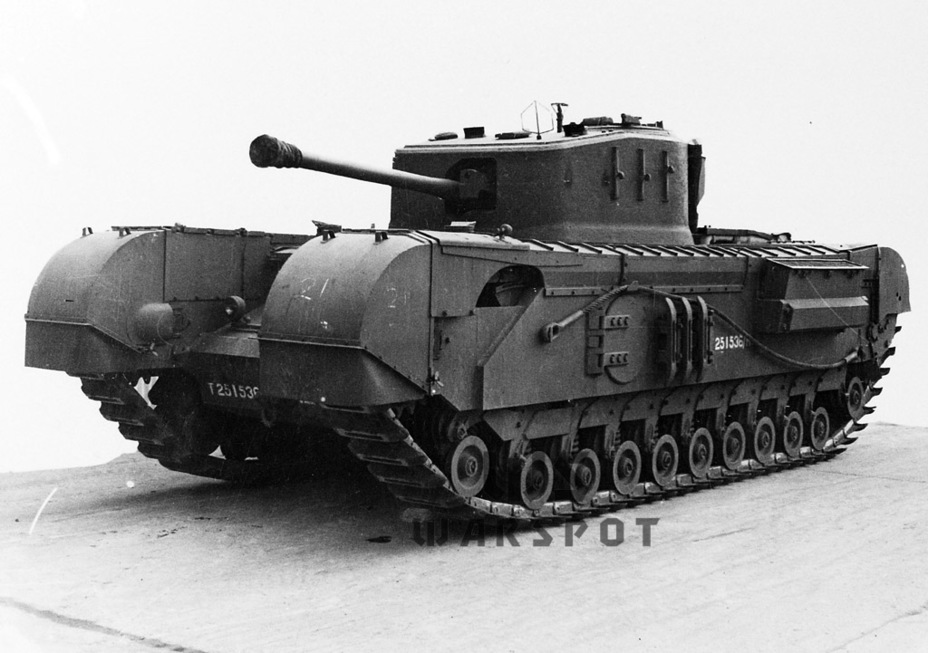
Even though the Churchill showed itself well in new conditions, certain conclusions were drawn from the North Africa campaign. The first was unexpected: even though the Churchill had just received a powerful 6-pounder gun, the gun was now under questions. There was no HE ammunition produced for it, which reduced the tank's effectiveness against infantry and fortifications. A logical solution could be the production of HE ammunition, the first of which became available in the spring of 1943. Nevertheless, the British military considered that replacing the gun was the optimal course of action. The American 75 mm M3 gun received a lot of praise in 1942-43. It was used on late model Grant tanks and later appeared on the Medium Tank M4 or Sherman.
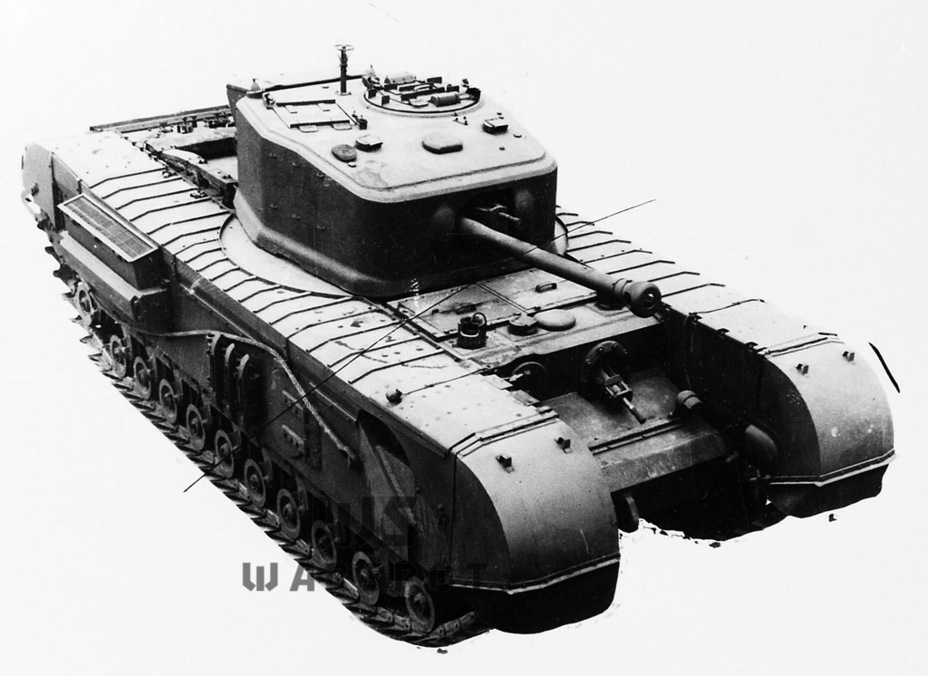
The first idea was the Churchill NA (North Africa) conversion, consisting of the installation of the M3 gun into the turret of a Churchill. This was only a half-measure. A British equivalent was needed. This is how the Ordnance QF 75 mm gun was born: a mix between the British 6-pounder and the American 75 mm M3. This was essentially a 6-pounder with an M3 tube. The muzzle energy of the resulting gun was slightly higher than that of the 6-pounder, which allowed the stock recoil mechanisms to remain. The breech also ended up mostly unchanged. The gun was equipped with a single baffle muzzle brake.
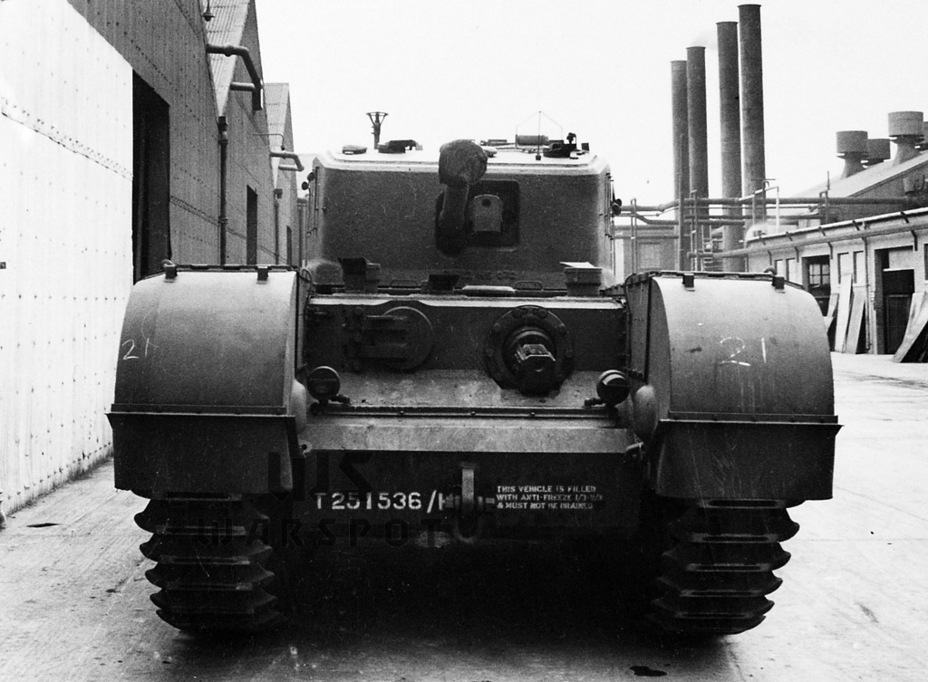
This rationalization of parts allowed existing tanks to be rearmed with the new gun. This led to the Churchill VI, essentially a Churchill IV with a 75 mm gun. The tank was supposed to be produced in large amounts, but the reality was different. The Churchill VI was built in a small batch, about 200 units. There was another significant problem: insufficient armour. Vertical 89 mm thick plates offered reliable protection from German 50 mm guns. However, this armour was not a problem for the 88 mm Flak 18 or KwK 36 guns.
The situation only worsened when the British first met the Pz.Kpfw.IV Ausf.F2 tanks armed with the 7.5 cm KwK 40 L/43 gun and the Pak 40 anti-tank gun. The armour of the British tank was not a serious impediment for them either. As a result, discussion of upgrading the tank's armour began in the spring of 1943. In May, the tank was designated Heavy Churchill or A22F.
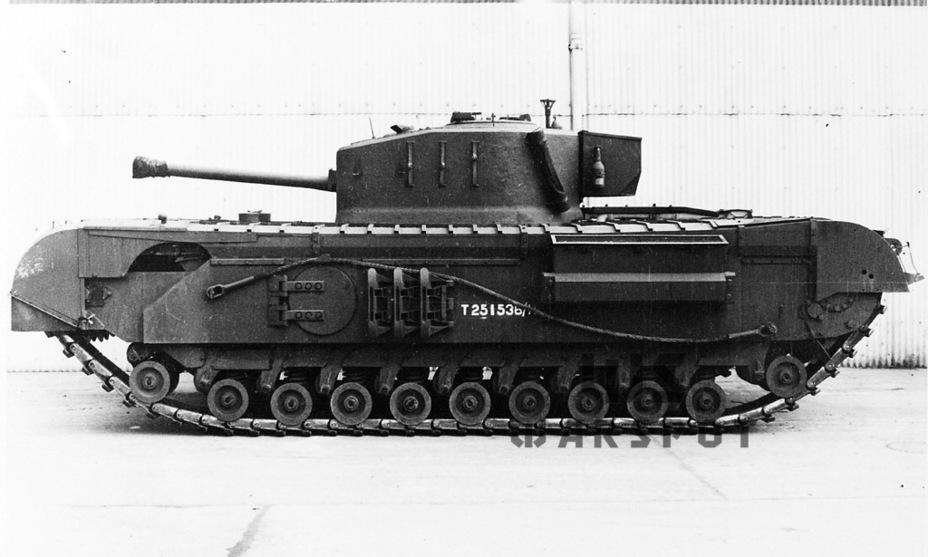
Vauxhall Motors had a difficult task ahead of it. On one hand, the protection had to be increased, on the other, this had to be done carefully. A large increase in mass would introduce issues with mobility and reliability. The improvements were mostly evolutionary, although there was one revolutionary aspect. The British first used welding to build Churchill III tanks, but mostly the turret was welded and the hull was still riveted. It was clear by 1943 that riveted construction is a bit conservative, and the A22F received a fully welded hull, which improved its robustness. This was not the only change: the front of the hull was thickened to 152 mm.
In order to keep the weight gain down, the center front plate was 140 mm thick, but installed at an angle. The sides were thickened to 95 mm. The bow gun, driver's observation port, and evacuation hatches were also changed. The evacuation hatches used to be rectangular, now they became round. The thickness of the rear armour was the same, but the air intakes changed. The dimensions of the hull did not change.
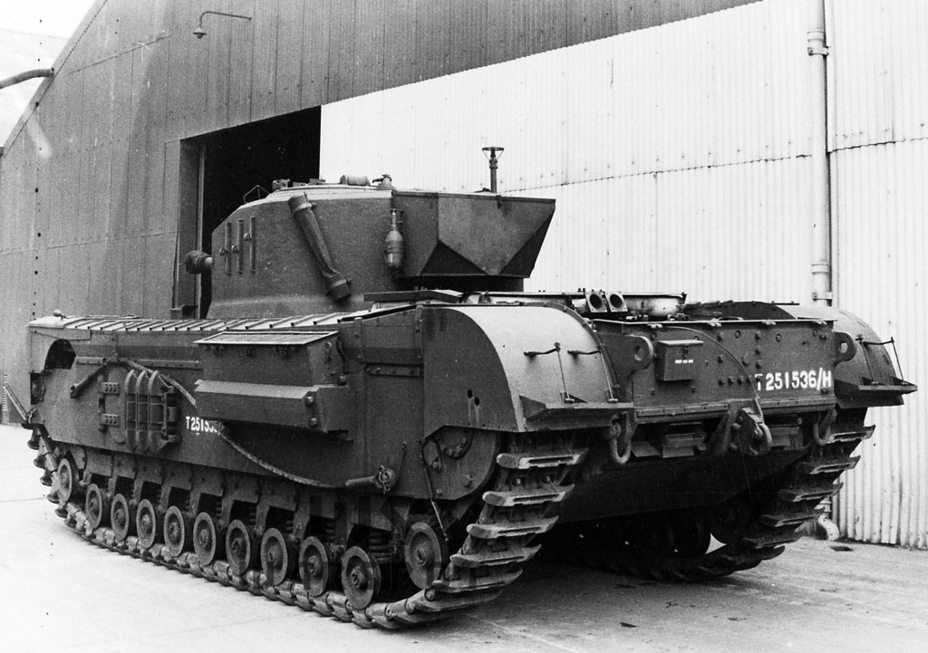
The turret changed more radically. Vauxhall did not pull this turret from thin air. A similar turret was designed for the Cromwell tank in 1943. It was not put into production, but was used as a starting point for the new Churchill tank turret. It was cast, like the turret of the Churchill IV, but the shape and production process changed. While the Churchill IV turret was a single casting, the Churchill VII had a welded roof, which made the casting simpler. The shell traps on the bottom of the turret were removed. The gunner received a Mk.IV periscope. The entire roof, including the ventilation fan and hatches, was changed.The gun mount was also altered: it was better protected, but still had an internal mantlet which increased the risk of jamming. The thickness of the turret armour increased too: the front was 152 mm thick and the sides were up to 95 mm thick.
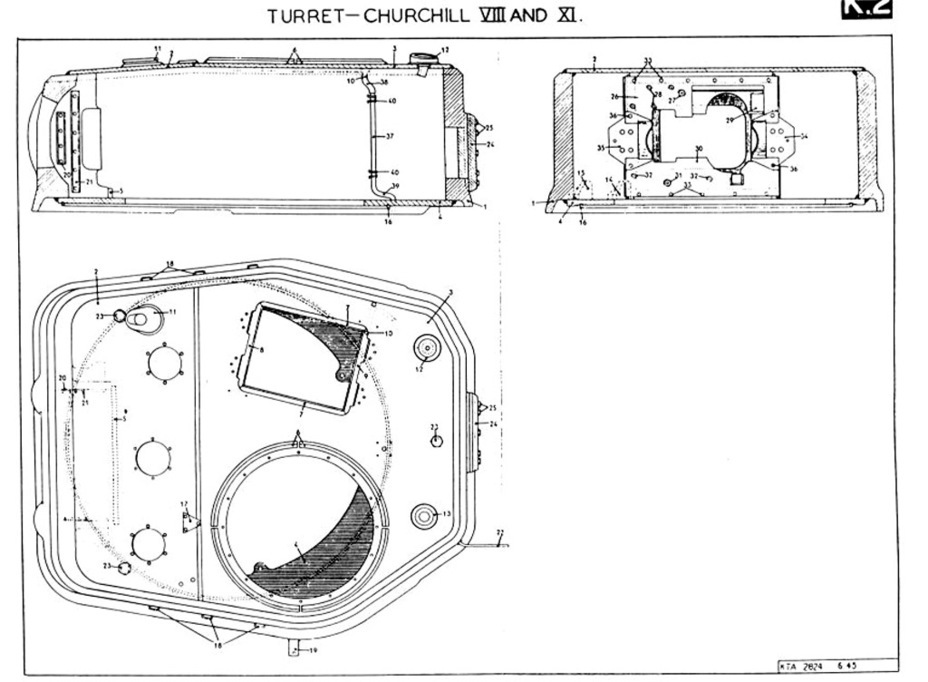
The mass grew from 40 tons to about 41 tons as a result, not bad considering how greatly the armour improved. The small increase in mass was partially due to the fact that the switch to welding allowed the designers to get rid of the mild steel frame and save the weight. Nevertheless, the running gear and transmission had to be improved. The engine was the same 21.5 L Bedford Twin-Six 12-cylinder opposite, although to compensate for the increased mass it was supercharged from 325 to 350 hp. The layout of the transmission was the same, but the modernized David Brown Tractors H41 gearbox was used (the Churchill III/IV had the H4 gearbox). Another change was the removal of the dual controls. On earlier tanks, the assistant driver could turn the tank from his seat in case of an emergency. The suspension springs were also reinforced.
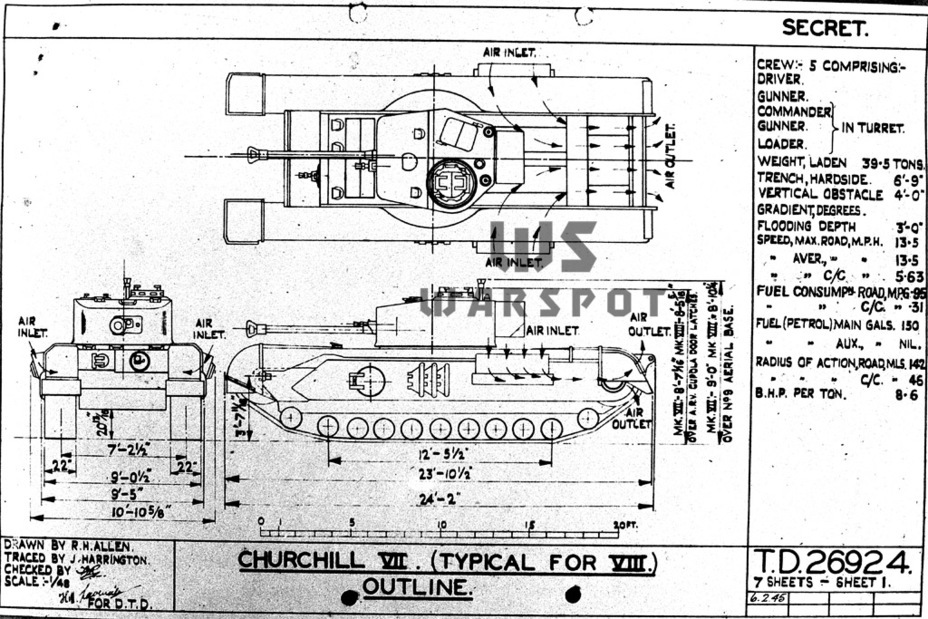
The power to weight ratio remained the same thanks to the supercharging, but the tank became slower. The Churchill IV had a maximum speed of 28 kph and an average speed of 26 kph on the highway, but the Churchill VII had a maximum and average speed of 22 kph. The average speed off-road was very low: 9 kph.
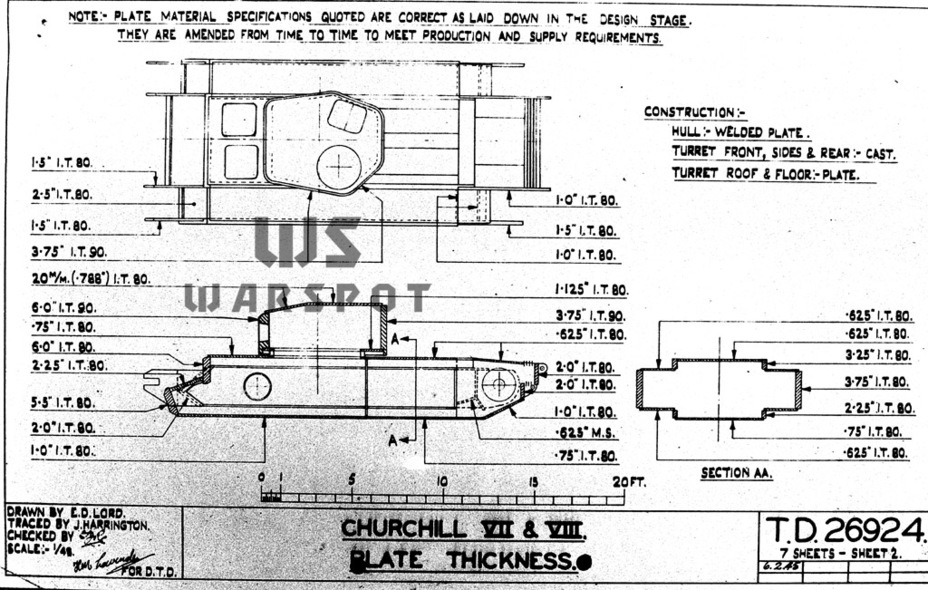
Like the Churchill IV and V «couple», the Churchill VII also had a howitzer counterpart. This tank was indexed Churchill VIII. The only difference was the use of the 95 mm howitzer Mk.I. This gun shared parts with the 25-pounder (88 mm) field gun and fired HE, smoke, and HEAT ammunition. The on-board capacity was 47 rounds. Like the Churchill V, this tank was not meant to be produced in great numbers.
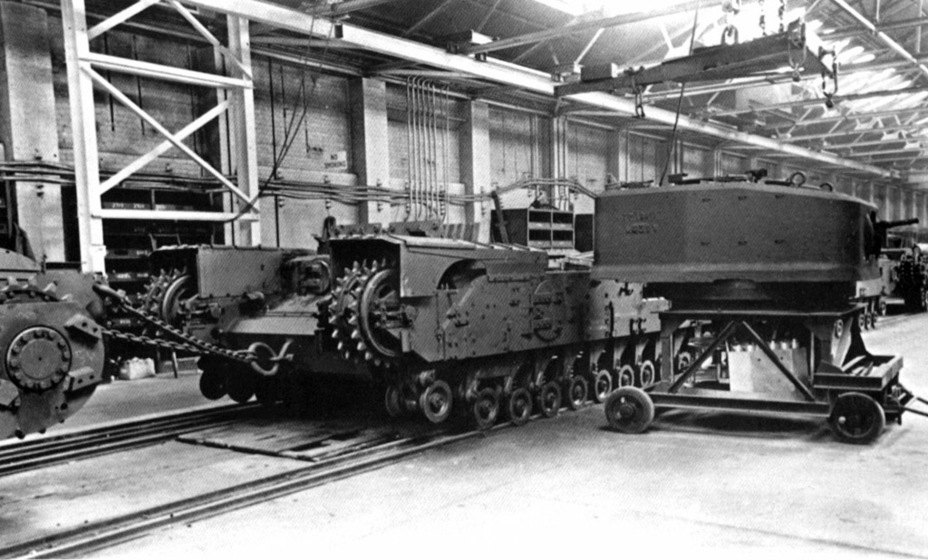
Production deserves a separate discussion. The twisted system of contracts and distribution among contractors means that it's impossible to figure out how many tanks were built exactly. The first 58 tanks were built to satisfy contract M5701, which initially requested 500 Churchill IV and V tanks. These tanks received registration numbers T.173142-T.173199. The main contract for 1000 tanks of this type received the registration number space T.251505-T.252504. 438 tanks were assigned registration numbers in the T.341209-T.341646 range, but they include both Churchills VI and VII. Another 210 were assigned registration numbers T.347659-T.347868. One final tank with the registration number T.386915 was built. Officially, all tanks were built by Vauxhall, but it is not known which factories really built them.
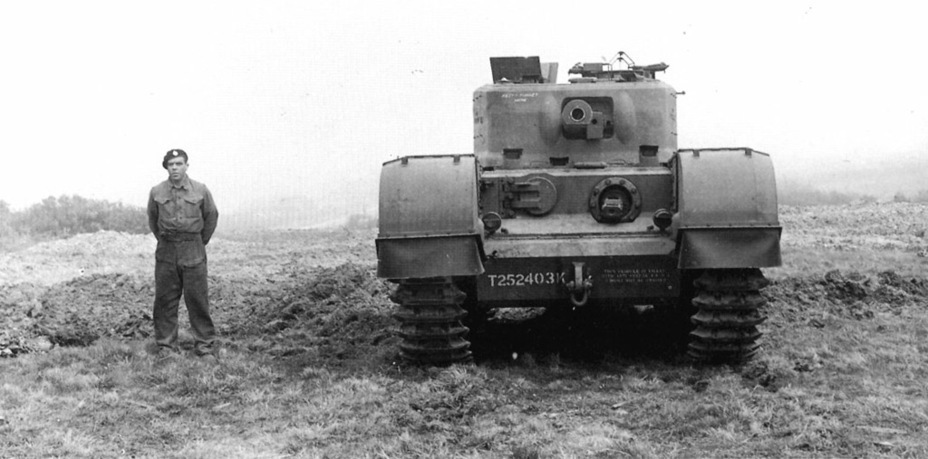
Due to constant changes in the contracts, one can only approximately count the number of tanks produced: about 1400 Churchill VII and 200 Churchill VIII. The first tanks were delivered in late 1943, the last ones in late 1944. A number of the tanks were converted to special flamethrower tanks.
Best of the firebreathers
Flamethrower tanks picked up as a serious pursuit in the late 1930s. The USSR built the most, but the Germans and Italians also built many. The British did not take an interest in this topic at first. This was in part due to the fact that the military could not prepare reqiurements for such a niche vehicle. There were also issues with a choice of chassis. Finally, the Churchill was considered optimal. This tank had good protection and the poor mobility was not a drawback. A flamethrower tank's job was to reach a stationary target and fire a stream of incendiary fluid precisely. Two competing organizations were tasked with the development of flamethrower tanks, the Petroleum Warfare Department (PWD), formed in 1940, and the Ministry of Supply (MoS).
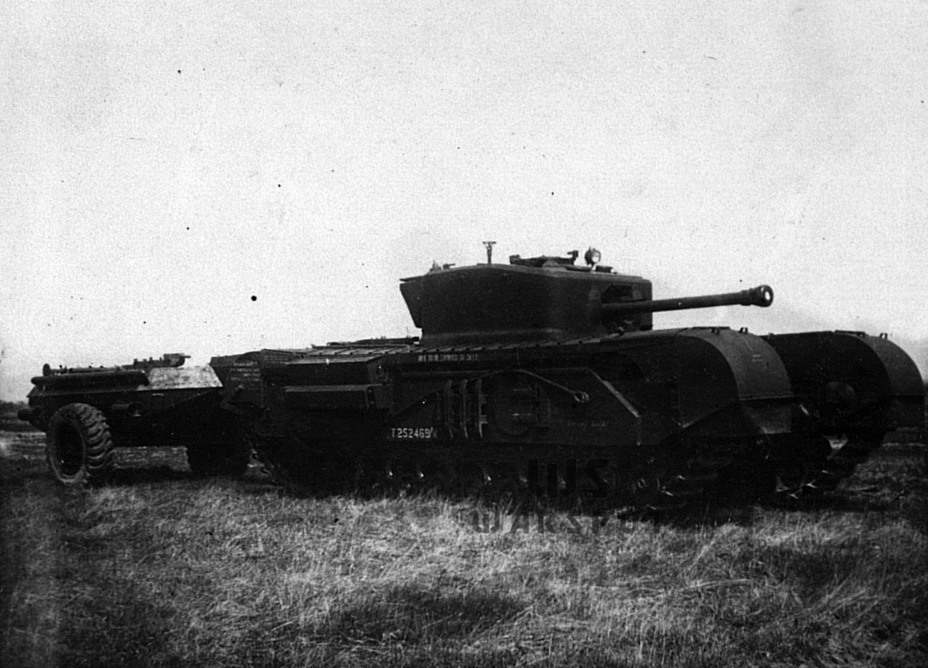
The British flamethrower tank began to take shape by 1942. Unlike other nations, which housed the flamethrower fuel inside the tank, the British had them outside. This increased the crew's chance of survival when hit (one has to keep in mind that flamethrower operators were usually not taken prisoner). Early flamethrower Churchill variants had the fuel tank on the back of the hull. This solution was judged to not be the best, but this variant, called Churchill Oke, was the first to be used in battle. These tanks were used by the 14th Canadian Tank Regiment during the infamous raid on Dieppe. The PWD considered the use of special trailers the best solution. This was not a new idea: Italian and Soviet tanks with chemical trailers already existed. However, the British were the first to move the dangerous ammunition entirely into the trailer. The system was first tested on the Valentine tank, both PWD and MoS variants.
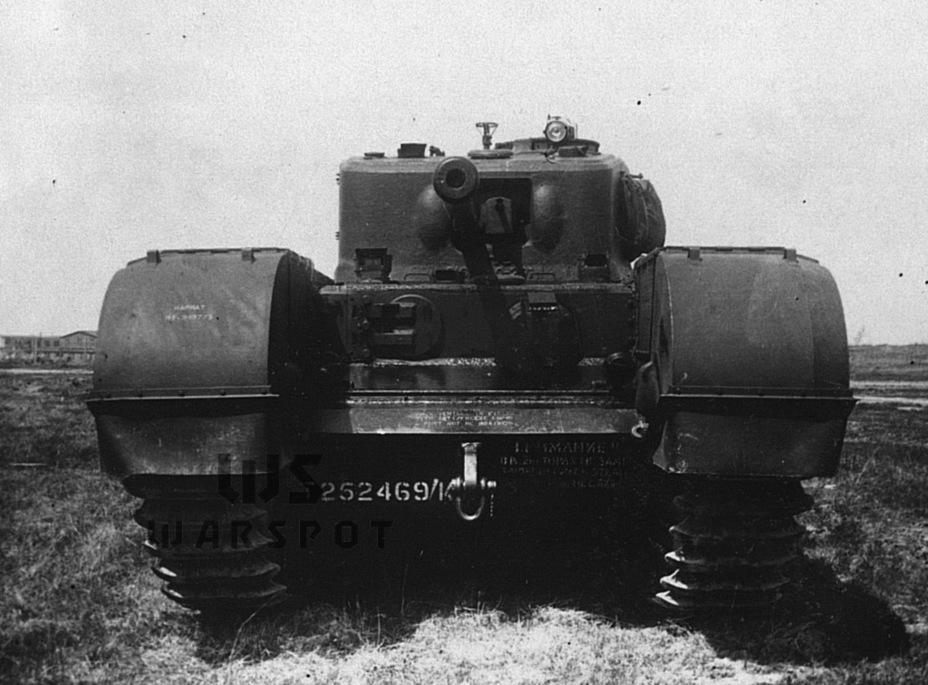
The first experimental Churchill with a trailer was ready by December 1942. A Churchill II was used, but this was more of a testbed. The real star of the show was the equipment installed on it. Calculations expected the flamethrower to have a fantastic range of 182 meters. Trials shows that the range with a tail wind was 140 m. However, this was a record among flamethrower tanks. The ATO-42 (used on the KV-8 and T-O34) had a range of 65-70 meters. German flamethrower tanks had about the same range. The range of the ATO-42 later increased thanks to an improved composition of the mixture, but the range of the British flamethower was still greater. The flamethrower used up 21 L (14 kg) of fluid per shot, one shot lasted 2-3 seconds.
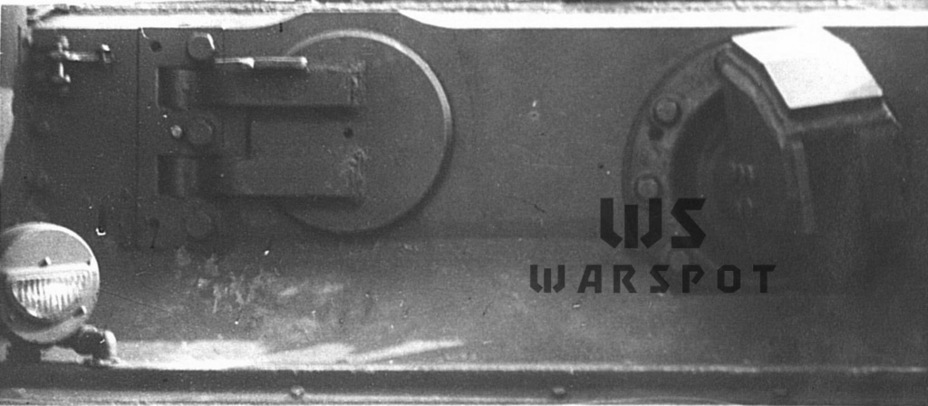
Like before, no tanks were installed inside the Churchill. The fuel and compressed air tank were placed inside a special trailer. Unlike the initial designs, the trailer was fully armoured. The thickness of the plates was 12 mm, which protected it from small arms fire. The drawback was an impressive weight of 6 tons. Up to 1600 kg (2400 L) of fuel and 5 tanks of compressed nitrogen were housed inside. A special ball and socket device connected the hoses of the trailer to the tank. This allowed the trailer to have great freedom of movement. The designers also thought about safety. The bow gunner could disconnect the trailer using a propellant charge from his station. All that had to be done then is to blow out the pipe and the tank was completely free of flamethrower fuel.
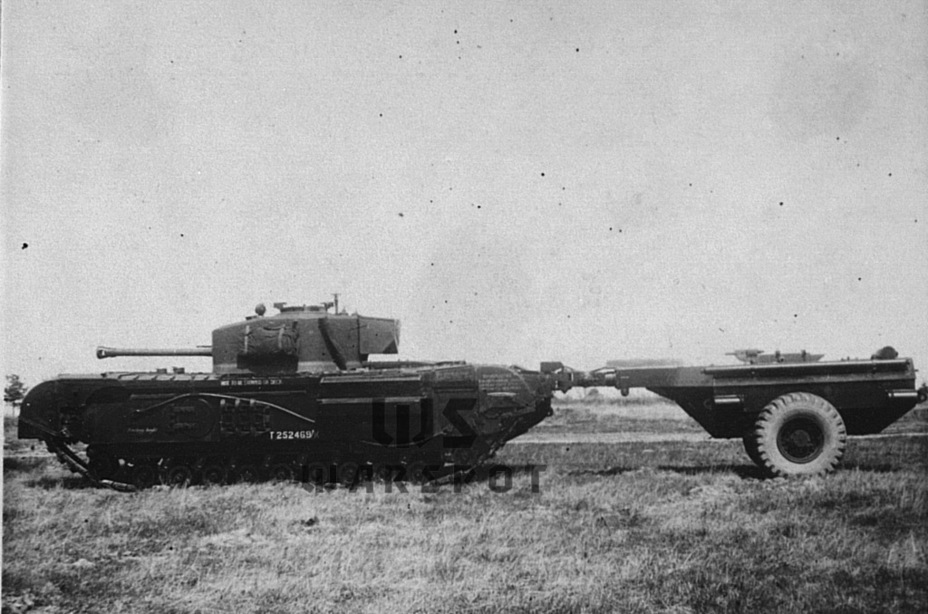
Further work on the system, named Churchill Crocodile, was directly supervised by Major General Percy Hobart. He was in command of the 79th Armoured Division, which specialized in various non-standard equipment, earning the nickname «Hobart's Funnies». Trials showed that the idea with a trailer was a good one. The ability to quickly transform a regular tank into a flamethrower one was built right into the A22F. This was not a new idea, the GABTU required new tanks to have the ability to be converted into flamethrower tanks by replacing the bow gun with a flamethrower, but in practice the 10 L flamethrower was never put into mass production and the T-O34 and KV-8 had to have radical changes done to their fighting compartment. In case of the Churchill Crocodile, the changes were minimal. All one had to do was to replace the bow gun with a flamethrower, run the fuel lines, and install the ball and socket device in the already existing slot. If needed, one could convert a regular Churchill into a Crocodile without much issues.
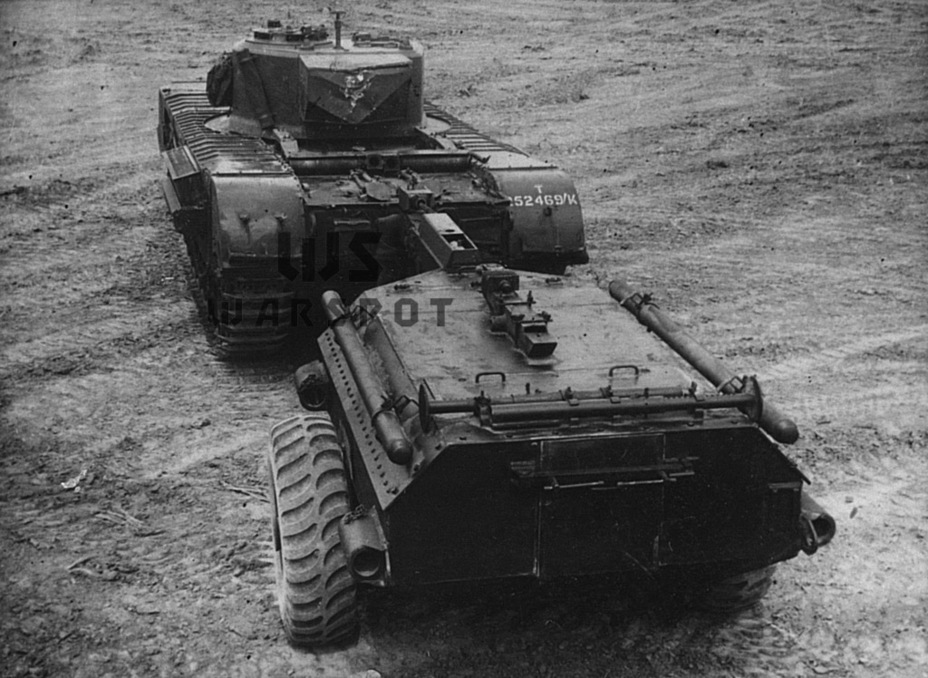
The result was a good contender for the best flamethrower tank of WWII. It had the greatest range and greatest fuel reserves of its competitors. The conversion also did not demand significant changes to the tank. This was the best protected of all flamethrower tanks, giving it the highest chance to make it to its target. Since the conversion did not touch the main gun and ammunition racks, the combat effectiveness of the Churchill VII was equal to that of regular tanks. Finally, this was the safest flamethrower tank for the crew.
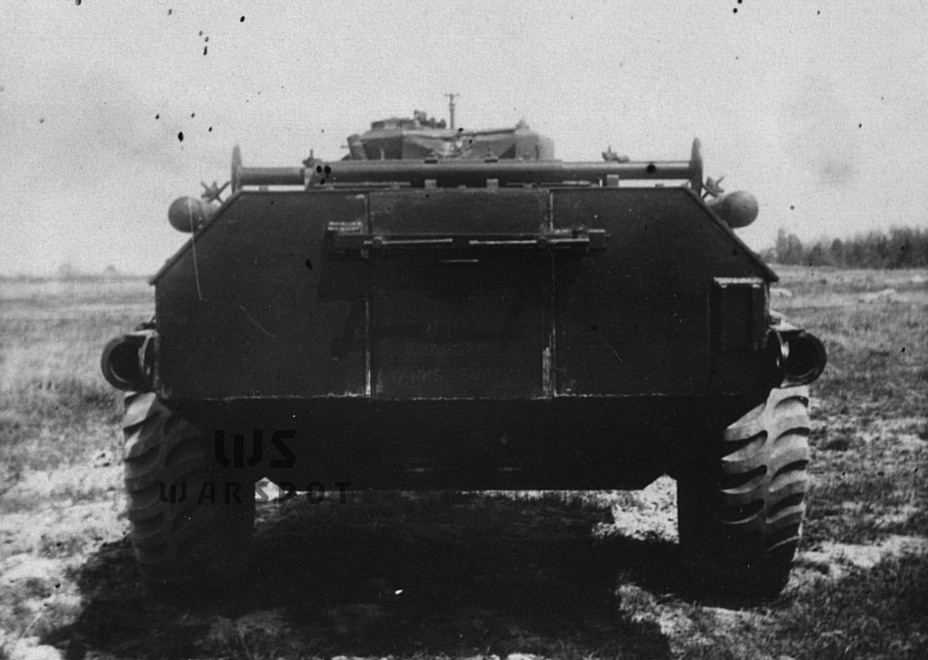
The first Churchill VII Crocodile tanks were ready in the fall of 1943. The rate of conversion of Churchill VII tanks into Crocodiles increased, and finally about half of all Churchill VII tanks (about 800) received flamethrowers. This includes the Churchill VIII, but it is not known how many were converted. The registration number changed when the tanks were converted. The suffix K was added to indicate that this was a flamethrower tank.
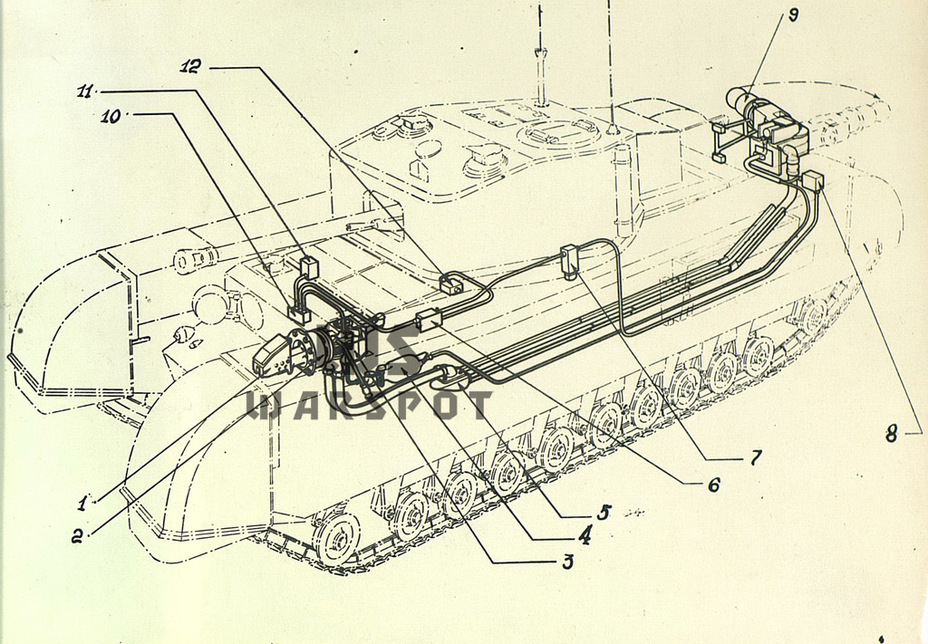
Trials of the tank by the GBTU in the summer of 1945 are interesting to note when discussing the tank's effectiveness. The Churchill VII Crocodile first came up in correspondence in March of 1945. It was made known that the British were sending three new types of tanks and armoured cars, one of which was the Crocodile. A month later, convoy JW-66 arrived in Murmansk, which included three flamethrower tanks with registration numbers T.252466/K, T.2524688/K and T.252469/K. The last one was tested in Kubinka in the summer of 1945.
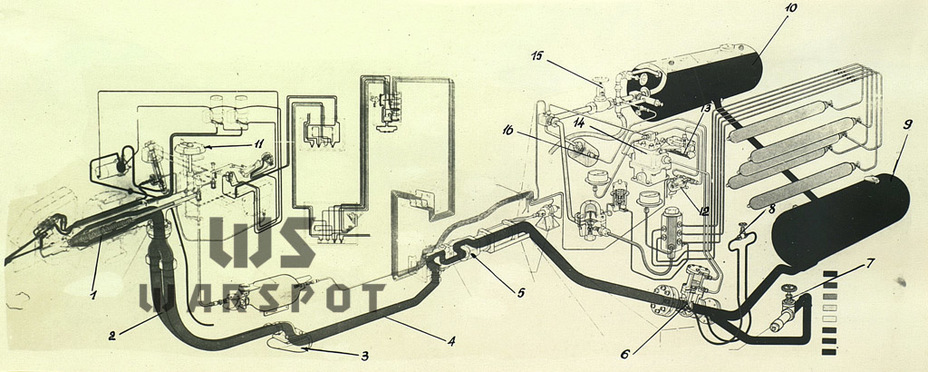
The flamethrower naturally attracted the most interest. Trials showed that the effective range was 100 m and the maximum was 120 m. The width of the affected area was 8 meters. The range was sensitive to wind: it was reduced to 60 m with a side wind, with the width of the affected area increasing to 10 m. Trials showed that it was possible to fire either with all tanks open or with just one. Separate trials with compressed air instead of nitrogen were performed. This had no effect on range, but the chance of fire increased. Two cases where the fuel ignited on the flamethrower were recorded. Trials showed that the use of the flamethrower only slightly impedes the use of the main gun.
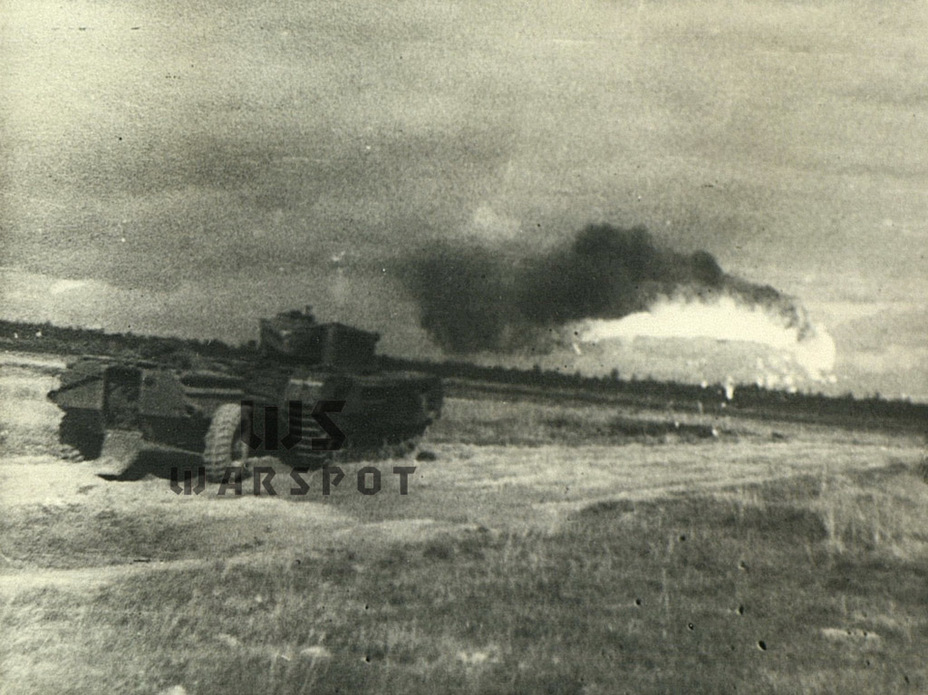
Comparative trials with an ATO-42 flamethrower installed in a T-O34 tank were also interesting. The improved mixture increased its range to 126 m, with the effective range being 100-110 meters. 10 L of fuel was used per shot and the width of the fire was smaller. The range increased to 145 m when using the British mixture. The Crocodile's range was reduced to 90 m when using the Soviet mixture.
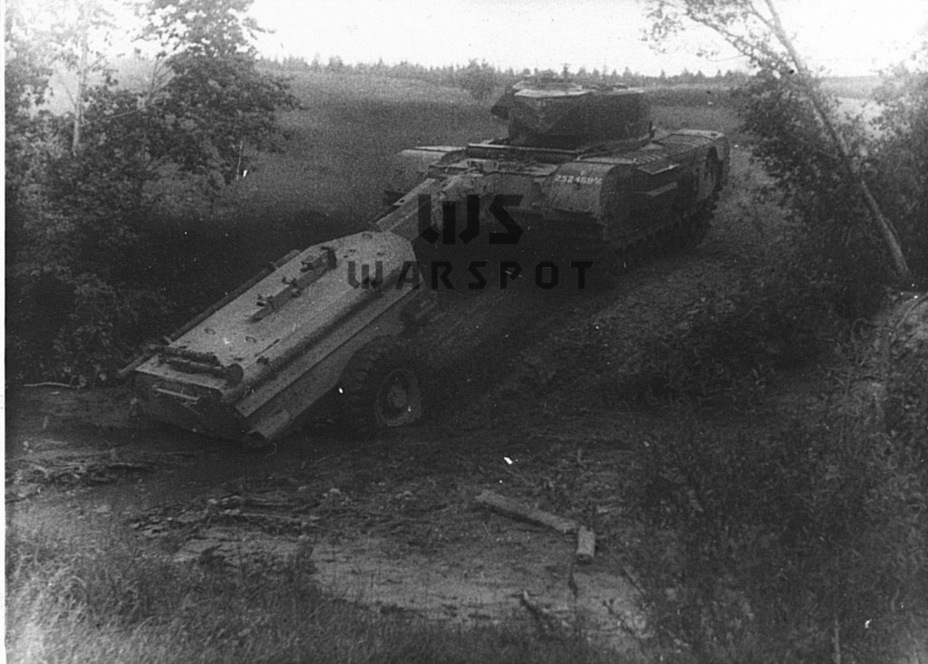
The Churchill VII Crocodile was praised for a large amount of fuel it could carry and good composition of the mixture. Thanks to a greater amount of fuel fired per shot, it was more effective than the ATO-42. The flamethrower and its fuel lines were effective and safe. There were no cases of the tank's hull catching fire (only some cases of the fuel dripping on the hull when the pressure was below normal). The overall concept of the Churchill VII Crocodile was considered poor. The testers did not like either the Churchill VII chassis nor the trailer. Even the advanced ball and socket system got in the way during driving, especially when backing up. The trailer greatly increased the turning radius and made turning in place impossible.
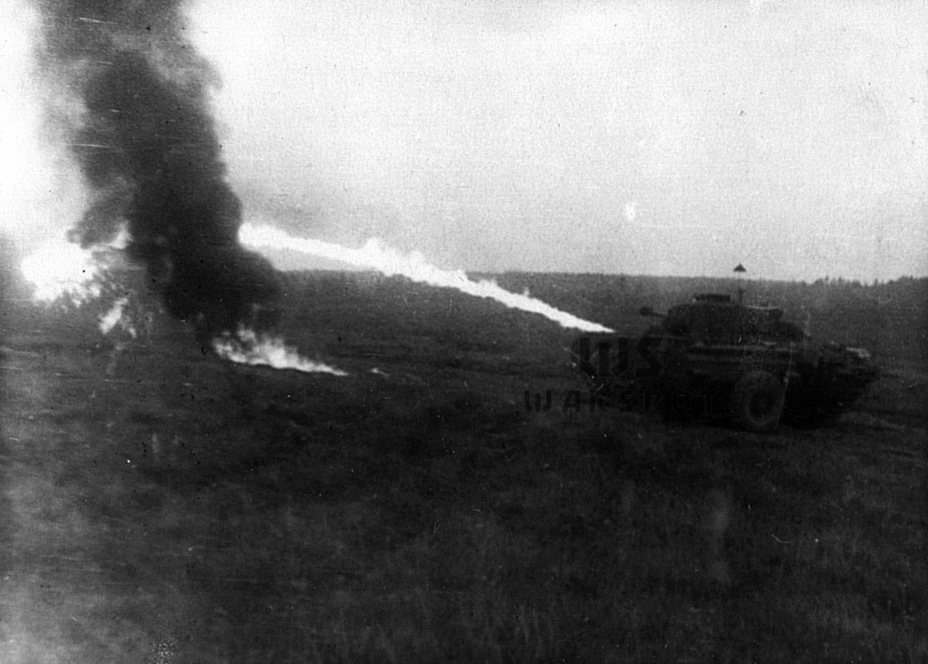
One tank of the three that arrived survived to this day, the one with registration number T.252468/K produced in February of 1945. Today this is the most authentic of all tanks of this type. Most of its surviving brethren carry signs of extended use.
Slow and steady long-liver
The production launch in the fall of 1943 affected the combat debut of the Churchill VII. The main theatre of war where British tanks fought at the time was Italy, where the Churchill III/IV, some of which already had 75 mm guns, were sufficient. Therefore, the tanks were not used in battle for the first six months of their production. The Cromwell was in a similar boat. Its combat debut was delayed even more.
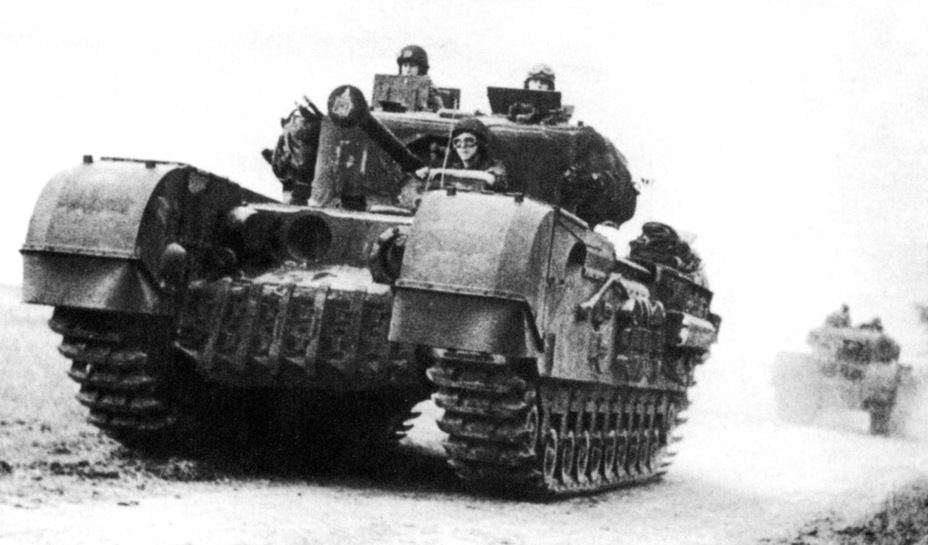
One of the first recipients of the new tank was the 7th Royal Tank Regiment. This was one of the first units to use infantry tanks in battle at Arras in May of 1940. However, the regiment landed in Normandy with Churchill VI tanks. The same situation took place in the 9th RTR. This regiment, also a part of the 31st Tank Brigade, also used earlier Churchill tanks. Even though the Churchill VII had more powerful armour, it was not the main type of Churchill tank either in Normandy or by the end of 1944. Only 69 Churchill VII tanks were in service out of 546 Churchill tanks of all type (excluding engineering vehicles). These tanks were still not the main type of Churchill tank in the 21st Army Group even in the end of 1944, when production stopped.
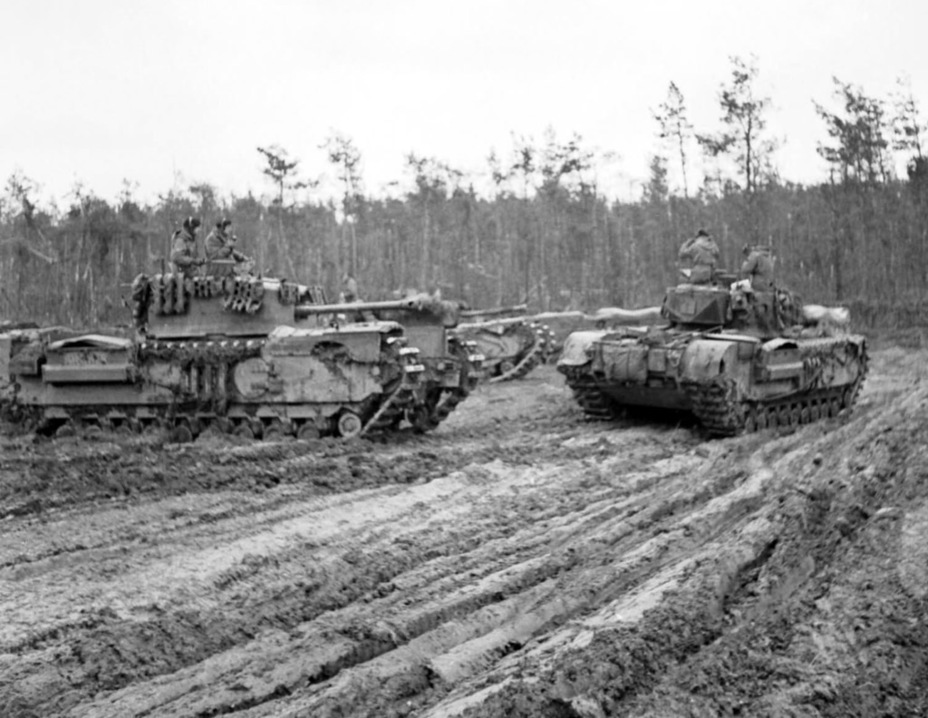
This strange situation can be explained by a number of factors. First of all, many tanks of the old type were still in use, and most were already armed with 75 mm guns. The firepower of these tanks was equal to the new one. Second, the increased protection came at a loss of mobility. Infantry tanks were not very fast to begin with, and the Churchill VII was even slower. To compare, the Churchill III showed an average speed of 17.5 kph on a dirt road during trials at the NIBT proving grounds, and the Churchill VII had an average speed of 14.2 kph. The fuel expenditure grew significantly: the Churchill III consumed 482 L of gasoline per 100 km, the Churchill VII consumed 653 L. Finally, a portion of the older tanks received applique armour and were close to the Churchill VII in protection.

The new tanks made their debut in Normany in two units: the 34th Tank Brigade and the 141st Royal Tank Regiment. The first had 24 tanks of this type, the second had 45. The 141st Regiment, a part of Hobart's 79th Armoured Division, had the most interesting debut. The regiment landed on Gold beach. The tanks successfully engaged a German battery but did not use flamethrowers. The fighting on June 14th for the village of La Senaudière south of Bayeux was tougher. Three flamethrower tanks attacked the village, engaged a PzIII, and ended up face to face with a Panther tank from the Panzer Lehr division. The first tank fired its cannon, but did not penetrate. The second fired a shot from its flamethrower. The German tank was disabled as a result. A second Panther destroyed one of the Churchills in that battle. The Crocodiles also excelled in battle for hill 112 and showed themselves well in other battles of the summer-fall 1944.
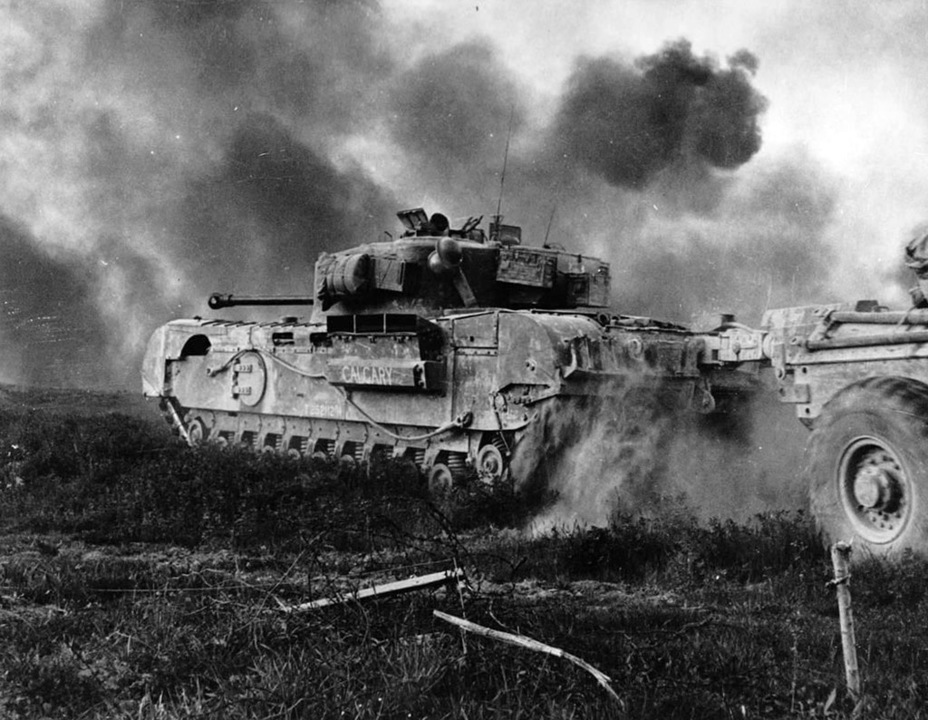
The tough front armour allowed the Crocodile to approach its target even under heavy fire, allowing it to put its effective flamethrower to good use. The drawback was increased attention paid by German anti-tank gunners to flamethrower tanks. The Churchill Crocodile was easily spotted due to its trailer, which drew concentrated fire.
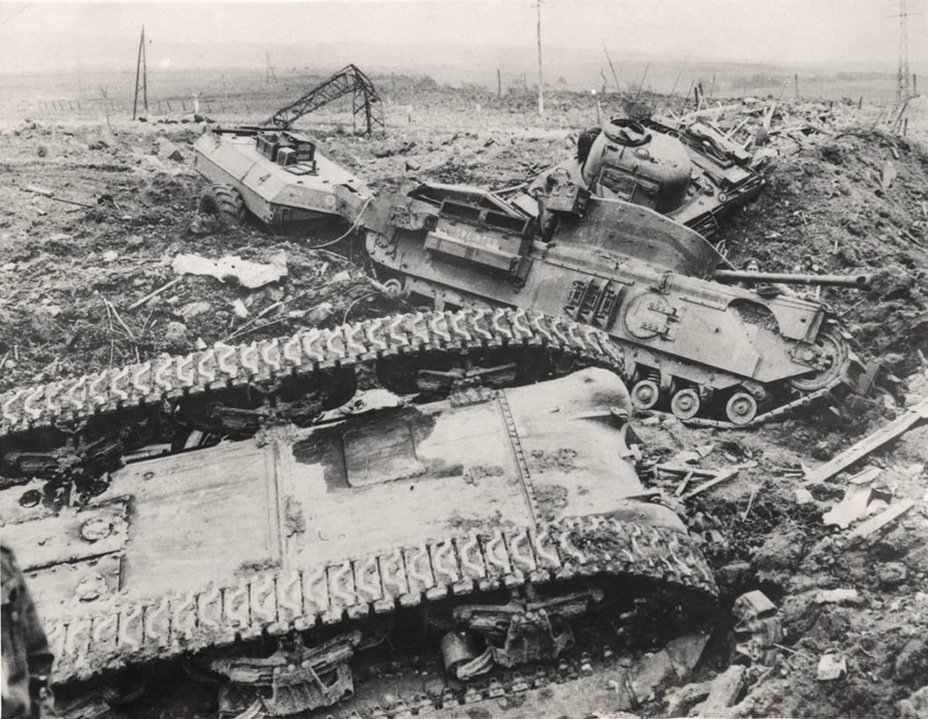
The success of the 141st RTR led to an increase in the proportion of Churchill VII Crocodile tanks compared to regular ones. Out of 122 Churchill VII tanks in the 21st Army Group as of December 1944, 90 had flamethrowers. The Western Front was the biggest user of flamethrower Churchills. As for the Churchill VIII, combat photos are very rare. Some Churchill VII tanks were sent to Italy where they were used in 1944-1945. Use of Churchill VII tanks, including Crocodiles, was planned against Japan, but they did not make it in time. The most that these tanks managed to do in the Pacific was go through trials.
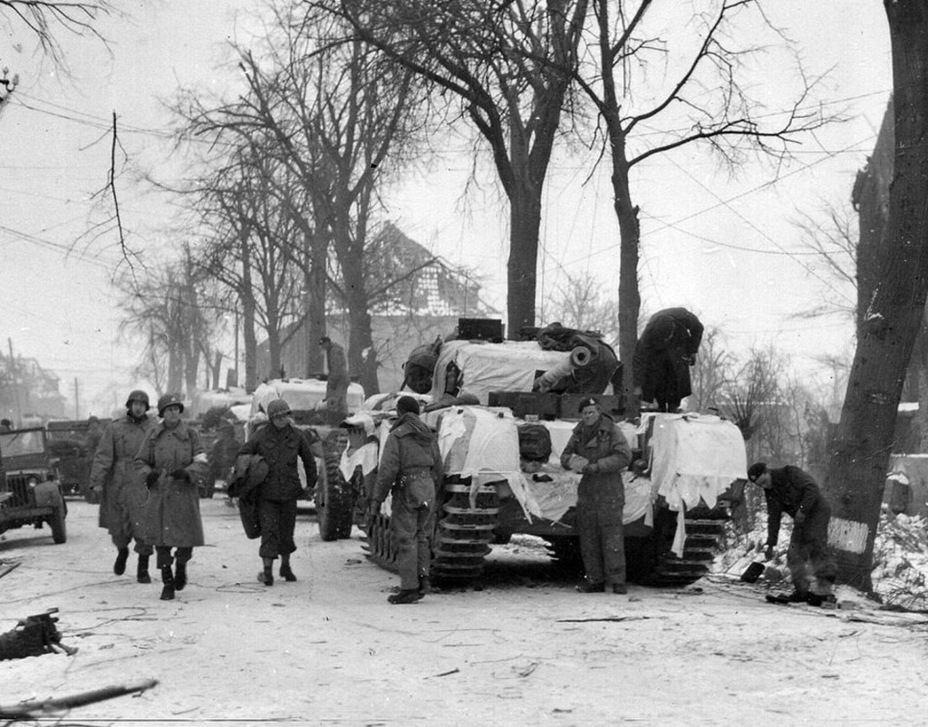
The Churchill VII only became the most common tank of this type after the war. In addition to being a superior design, the presence of a flamethrower played a part. The Churchill VII Crocodile was the longest surviving variant of the infantry tank. Of the three dozen tanks of this type that survive to this day, more than half are the flamethrower variant. In addition to the British army, the Churchill VII served in India, Iraq, and Jordan, who traditionally used British tanks.
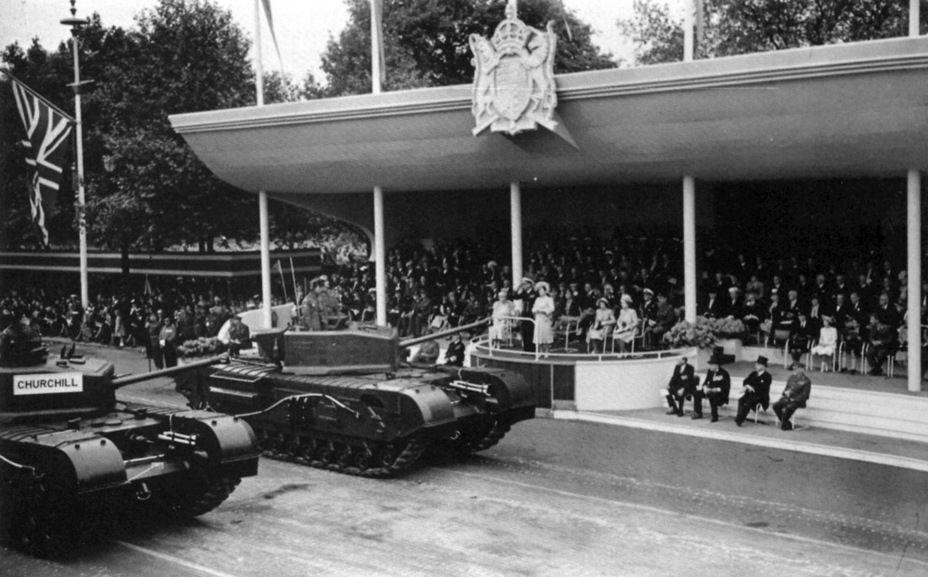
The Churchill VII was modernized after the war. A sure sign of modernization is the removable sections on the air intakes. Modernized tanks fought yet again, in 1950 in Korea. Coincidentally, the tanks ended up in the same 7th Royal Tank Regiment that was the first to receive these tanks, but not the first to use them. The Churchill VII Crocodile fought until 1951, when it was removed from active service. This was the end of the era of infantry tanks.
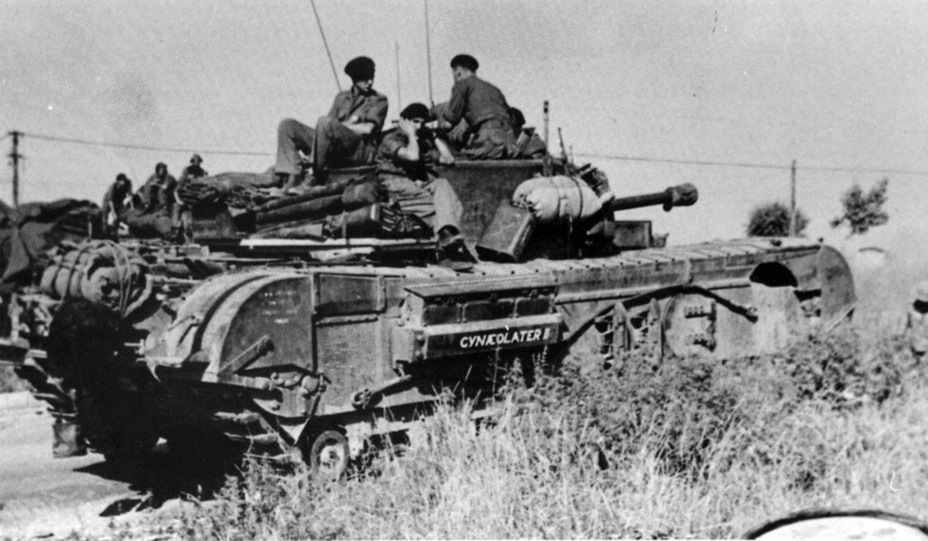
Like most British tanks of the late war period, the Churchill VII leaves a mixed impression. As Soviet specialists commented, this tank was obsolete. Its firepower was insufficient by the summer of 1944, and its mobility worsened. However, the tank made a very good flamethrower platform. Various engineering vehicles were also later built on the Churchill VII chassis.
Translated by Peter Samsonov. Read more interesting tank articles on his blog Tank Archives.
Sources:
- US NARA;
- Central Archives of the Russian Ministry of Defence;
- Author's archive;
- Mr. Churchill's Tank: The British Infantry Tank Mark IV, David Fletcher, Schiffer Publishing, Ltd, 1998, ISBN 978-0764306792.






